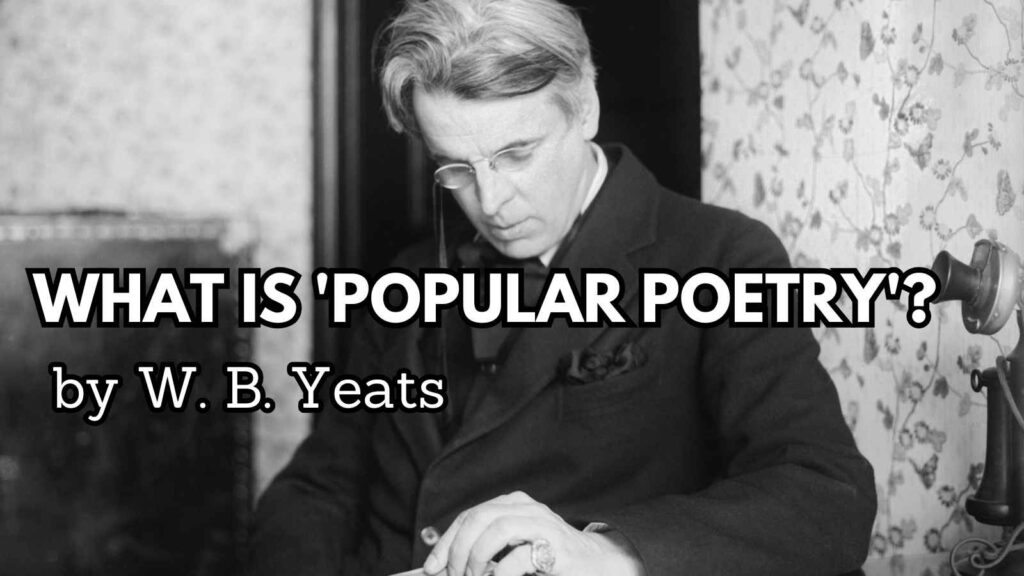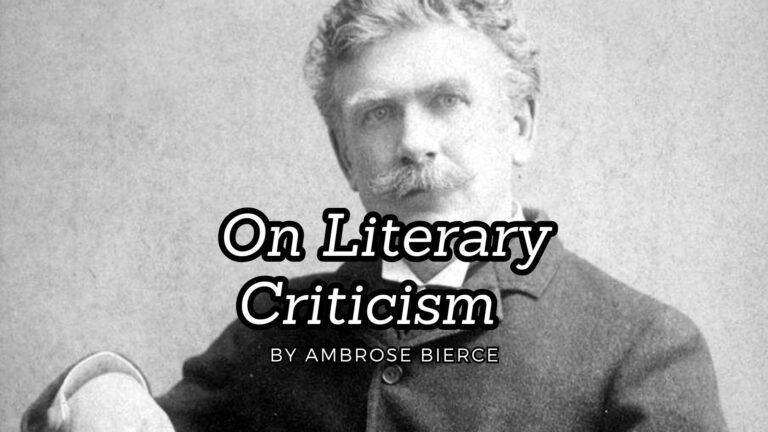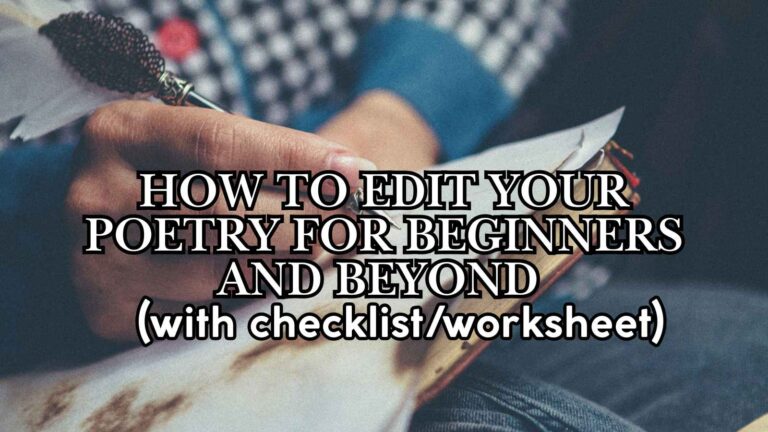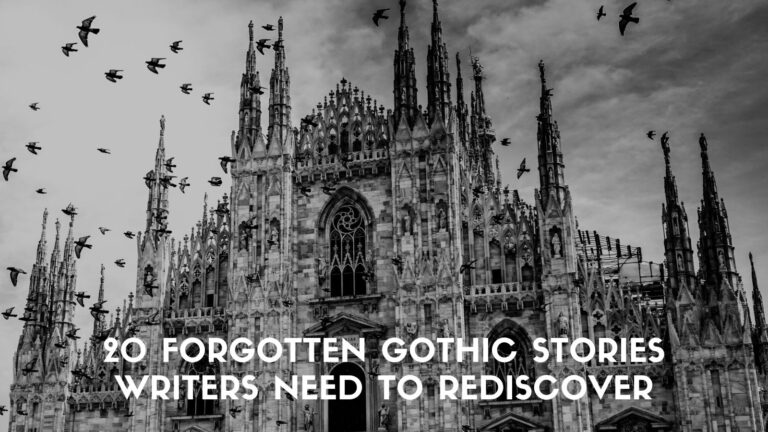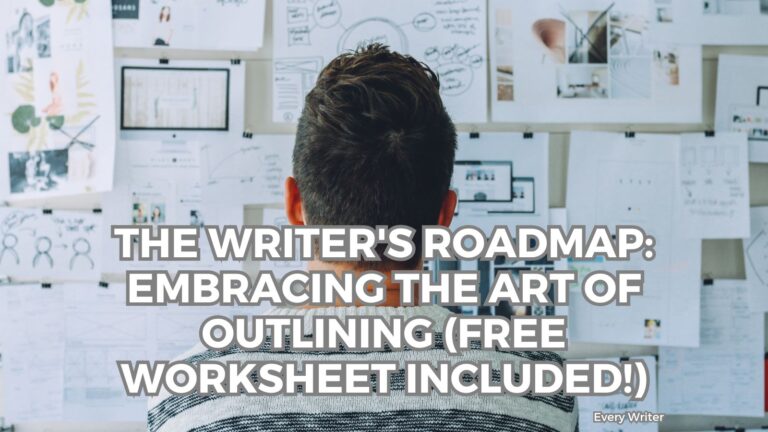What is ‘Popular Poetry’? By W.B. Yeats – A Critical Exploration of Irish Literary Tradition and Cultural Identity
This article was updated April 3, 2025.
In his influential essay “What is ‘Popular Poetry’?”, legendary Irish poet W.B. Yeats challenges conventional understandings of poetic traditions and cultural authenticity. Written during Ireland’s transformative literary revival, Yeats examines the complex relationship between folk traditions and formal poetry, questioning what truly constitutes “popular” verse and how it relates to national identity. As one of Ireland’s most celebrated literary figures, Yeats draws from his early experiences with Young Ireland societies and his deep immersion in traditional Irish culture to reshape our understanding of poetic heritage.
This thought-provoking essay reveals Yeats’ intellectual journey from a romantic enthusiasm for ballad poetry to a more nuanced understanding of literary tradition. Initially seeking to create a distinctly Irish poetic style that could ignite “a really great school of ballad poetry in Ireland,” Yeats eventually discovered that authentic poetry—whether emerging from oral traditions or literary circles—shares deeper qualities than surface-level accessibility or nationalism. His exploration of the “unwritten tradition” that binds genuine folk poetry to ancient cultural memories offers valuable insights for anyone interested in Irish literature, cultural preservation, or poetic theory.
Yeats’ distinctive analysis separates middle-class verse (like Longfellow or Scott) from true popular poetry, arguing that authentic verse resonates with ancestral wisdom regardless of its source. Through beautiful examples of traditional Irish songs and verses, he demonstrates how genuine poetry carries echoes of ancient beliefs, symbols, and emotions that connect readers and listeners to something transcendent. Discover why Yeats believed that the mystical quality of true poetry—its ability to “glimmer with thoughts and images whose ancestors were stout and wise”—transcends simple classification as “popular” or “elite” and continues to influence our understanding of literary traditions today.
What is ‘Popular Poetry’?
by W. B. Yeats
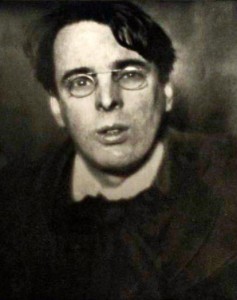 I think it was a Young Ireland Society that set my mind running on ‘popular poetry.’ We used to discuss everything that was known to us about Ireland, and especially Irish literature and Irish history. We had no Gaelic, but paid great honour to the Irish poets who wrote in English, and quoted them in our speeches. I could have told you at that time the dates of the birth and death, and quoted the chief poems, of men whose names you have not heard, and perhaps of some whose names I have forgotten. I knew in my heart that the most of them wrote badly, and yet such romance clung about them, such a desire for Irish poetry was in all our minds, that I kept on saying, not only to others but to myself, that most of them wrote well, or all but well. I had read Shelley and Spenser and had tried to mix their styles together in a pastoral play which I have not come to dislike much, and yet I do not think Shelley or Spenser ever moved me as did these poets. I thought one day—I can remember the very day when I thought it—‘If somebody could make a style which would not be an English style and yet would be musical and full of colour, many others would catch fire from him, and we would have a really great school of ballad poetry in Ireland. If these poets, who have never ceased to fill the newspapers and the ballad-books with their verses, had a good tradition they would write beautifully and move everybody as they move me.’ Then a little later on I thought, ‘If they had something else to write about besides political opinions, if more of them would write about the beliefs of the people like Allingham, or about old legends like Ferguson, they would find it easier to get a style.’ Then, with a deliberateness that still surprises me, for in my heart of hearts I have never been quite certain that one should be more than an artist, that even patriotism is more than an impure desire in an artist, I set to work to find a style and things to write about that the ballad writers might be the better.
I think it was a Young Ireland Society that set my mind running on ‘popular poetry.’ We used to discuss everything that was known to us about Ireland, and especially Irish literature and Irish history. We had no Gaelic, but paid great honour to the Irish poets who wrote in English, and quoted them in our speeches. I could have told you at that time the dates of the birth and death, and quoted the chief poems, of men whose names you have not heard, and perhaps of some whose names I have forgotten. I knew in my heart that the most of them wrote badly, and yet such romance clung about them, such a desire for Irish poetry was in all our minds, that I kept on saying, not only to others but to myself, that most of them wrote well, or all but well. I had read Shelley and Spenser and had tried to mix their styles together in a pastoral play which I have not come to dislike much, and yet I do not think Shelley or Spenser ever moved me as did these poets. I thought one day—I can remember the very day when I thought it—‘If somebody could make a style which would not be an English style and yet would be musical and full of colour, many others would catch fire from him, and we would have a really great school of ballad poetry in Ireland. If these poets, who have never ceased to fill the newspapers and the ballad-books with their verses, had a good tradition they would write beautifully and move everybody as they move me.’ Then a little later on I thought, ‘If they had something else to write about besides political opinions, if more of them would write about the beliefs of the people like Allingham, or about old legends like Ferguson, they would find it easier to get a style.’ Then, with a deliberateness that still surprises me, for in my heart of hearts I have never been quite certain that one should be more than an artist, that even patriotism is more than an impure desire in an artist, I set to work to find a style and things to write about that the ballad writers might be the better.
They are no better, I think, and my desire to make them so was, it may be, one of the illusions Nature holds before one, because she knows that the gifts she has to give are not worth troubling about. It is for her sake that we must stir ourselves, but we would not trouble to get out of bed in the morning, or to leave our chairs once we are in them, if she had not her conjuring bag. She wanted a few verses from me, and because it would not have seemed worth while taking so much trouble to see my books lie on a few drawing-room tables, she filled my head with thoughts of making a whole literature, and plucked me out of the Dublin art schools where I should have stayed drawing from the round, and sent me into a library to read bad translations from the Irish, and at last down into Connaught to sit by turf fires. I wanted to write ‘popular poetry’ like those Irish poets, for I believed that all good literatures were popular, and even cherished the fancy that the Adelphi melodrama, which I had never seen, might be good literature, and I hated what I called the coteries. I thought that one must write without care, for that was of the coteries, but with a gusty energy that would put all straight if it came out of the right heart. I had a conviction, which indeed I have still, that one’s verses should hold, as in a mirror, the colours of one’s own climate and scenery in their right proportion; and, when I found my verses too full of the reds and yellows Shelley gathered in Italy, I thought for two days of setting things right, not as I should now by making my rhythms faint and nervous and filling my images with a certain coldness, a certain wintry wildness, but by eating little and sleeping upon a board. I felt indignant with Matthew Arnold because he complained that somebody, who had translated Homer into a ballad measure, had tried to write epic to the tune of Yankee Doodle. It seemed to me that it did not matter what tune one wrote to, so long as that gusty energy came often enough and strongly enough. And I delighted in Victor Hugo’s book upon Shakespeare, because he abused critics and coteries and thought that Shakespeare wrote without care or premeditation and to please everybody. I would indeed have had every illusion had I believed in that straightforward logic, as of newspaper articles, which so tickles the ears of the shopkeepers; but I always knew that the line of Nature is crooked, that, though we dig the canal beds as straight as we can, the rivers run hither and thither in their wildness.
From that day to this I have been busy among the verses and stories that the people make for themselves, but I had been busy a very little while before I knew that what we call popular poetry never came from the people at all. Longfellow, and Campbell, and Mrs. Hemans, and Macaulay in his Lays, and Scott in his longer poems are the poets of the middle class, of people who have unlearned the unwritten tradition which binds the unlettered, so long as they are masters of themselves, to the beginning of time and to the foundation of the world, and who have not learned the written tradition which has been established upon the unwritten. I became certain that Burns, whose greatness has been used to justify the littleness of others, was in part a poet of the middle class, because though the farmers he sprang from and lived among had been able to create a little tradition of their own, less a tradition of ideas than of speech, they had been divided by religious and political changes from the images and emotions which had once carried their memories backward thousands of years. Despite his expressive speech which sets him above all other popular poets, he has the triviality of emotion, the poverty of ideas, the imperfect sense of beauty of a poetry whose most typical expression is in Longfellow. Longfellow has his popularity, in the main, because he tells his story or his idea so that one needs nothing but his verses to understand it. No words of his borrow their beauty from those that used them before, and one can get all that there is in story and idea without seeing them, as if moving before a half-faded curtain embroidered with kings and queens, their loves and battles and their days out hunting, or else with holy letters and images of so great antiquity that nobody can tell the god or goddess they would commend to an unfading memory. Poetry that is not popular poetry presupposes, indeed, more than it says, though we, who cannot know what it is to be disinherited, only understand how much more, when we read it in its most typical expressions, in the Epipsychidion of Shelley, or in Spenser’s description of the gardens of Adonis, or when we meet the misunderstandings of others. Go down into the street and read to your baker or your candlestick-maker any poem which is not popular poetry. I have heard a baker, who was clever enough with his oven, deny that Tennyson could have known what he was writing when he wrote ‘Warming his five wits, the white owl in the belfry sits,’ and once when I read out Omar Khayyam to one of the best of candlestick-makers, he said, ‘What is the meaning of “we come like water and like wind we go”?’ Or go down into the street with some thought whose bare meaning must be plain to everybody; take with you Ben Jonson’s ‘Beauty like sorrow dwelleth everywhere,’ and find out how utterly its enchantment depends on an association of beauty with sorrow which written tradition has from the unwritten, which had it in its turn from ancient religion; or take with you these lines in whose bare meaning also there is nothing to stumble over, and find out what men lose who are not in love with Helen.
‘Brightness falls from the air,
Queens have died young and fair,
Dust hath closed Helen’s eye.’
I pick my examples at random, for I am writing where I have no books to turn the pages of, but one need not go east of the sun or west of the moon in so simple a matter.
On the other hand, when Walt Whitman writes in seeming defiance of tradition, he needs tradition for his protection, for the butcher and the baker and the candlestick-maker grow merry over him when they meet his work by chance. Nature, which cannot endure emptiness, has made them gather conventions which cannot disguise their low birth though they copy, as from far off, the dress and manners of the well-bred and the well-born. The gatherers mock all expression that is wholly unlike their own, just as little boys in the street mock at strangely-dressed people and at old men who talk to themselves.
There is only one kind of good poetry, for the poetry of the coteries, which presupposes the written tradition, does not differ in kind from the true poetry of the people, which presupposes the unwritten tradition. Both are alike strange and obscure, and unreal to all who have not understanding, and both, instead of that manifest logic, that clear rhetoric of the ‘popular poetry,’ glimmer with thoughts and images whose ‘ancestors were stout and wise,’ ‘anigh to Paradise’ ‘ere yet men knew the gift of corn.’ It may be that we know as little of their descent as men knew of ‘the man born to be a king’ when they found him in that cradle marked with the red lion crest, and yet we know somewhere in the heart that they have been sung in temples, in ladies’ chambers, and our nerves quiver with a recognition they were shaped to by a thousand emotions. If men did not remember or half remember impossible things, and, it may be, if the worship of sun and moon had not left a faint reverence behind it, what Aran fisher-girl would sing—
‘It is late last night the dog was speaking of you; the snipe was speaking of you in her deep marsh. It is you are the lonely bird throughout the woods; and that you may be without a mate until you find me.
‘You promised me and you said a lie to me, that you would be before me where the sheep are flocked. I gave a whistle and three hundred cries to you; and I found nothing there but a bleating lamb.
‘You promised me a thing that was hard for you, a ship of gold under a silver mast; twelve towns and a market in all of them, and a fine white court by the side of the sea.
‘You promised me a thing that is not possible; that you would give me gloves of the skin of a fish; that you would give me shoes of the skin of a bird, and a suit of the dearest silk in Ireland.
‘My mother said to me not to be talking with you, to-day or to-morrow or on Sunday. It was a bad time she took for telling me that, it was shutting the door after the house was robbed….
‘You have taken the east from me, you have taken the west from me, you have taken what is before me and what is behind me; you have taken the moon, you have taken the sun from me, and my fear is great you have taken God from me.’
The Gael of the Scottish islands could not sing his beautiful song over a bride, had he not a memory of the belief that Christ was the only man who measured six feet and not a little more or less, and was perfectly shaped in all other ways, and if he did not remember old symbolical observances—
I bathe thy palms
In showers of wine,
In the cleansing fire,
In the juice of raspberries,
In the milk of honey.
·····
Thou art the joy of all joyous things,
Thou art the light of the beam of the sun,
Thou art the door of the chief of hospitality,
Thou art the surpassing pilot star,
Thou art the step of the deer of the hill,
Thou art the step of the horse of the plain,
Thou art the grace of the sun rising,
Thou art the loveliness of all lovely desires.
The lovely likeness of the Lord
Is in thy pure face,
The loveliest likeness that was upon earth.
I soon learned to cast away one other illusion of ‘popular poetry.’ I learned from the people themselves, before I learned it from any book, that they cannot separate the idea of an art or a craft from the idea of a cult with ancient technicalities and mysteries. They can hardly separate mere learning from witchcraft, and are fond of words and verses that keep half their secret to themselves. Indeed, it is certain that before the counting-house had created a new class and a new art without breeding and without ancestry, and set this art and this class between the hut and the castle, and between the hut and the cloister, the art of the people was as closely mingled with the art of the coteries as was the speech of the people that delighted in rhythmical animation, in idiom, in images, in words full of far-off suggestion, with the unchanging speech of the poets.
Now I see a new generation in Ireland which discusses Irish literature and history in Young Ireland societies, and societies with newer names, and there are far more than when I was a boy who would make verses for the people. They have the help, too, of a vigorous journalism, and this journalism sometimes urges them to desire the direct logic, the clear rhetoric, of ‘popular poetry.’ It sees that Ireland has no cultivated minority, and it does not see, though it would cast out all English things, that its literary ideal belongs more to England than to other countries. I have hope that the new writers will not fall into its illusion, for they write in Irish, and for a people the counting-house has not made forgetful. Among the seven or eight hundred thousand who have had Irish from the cradle, there is, perhaps, nobody who has not enough of the unwritten tradition to know good verses from bad ones, if he have enough mother-wit. Among all that speak English in Australia, in America, in Great Britain, are there many more than the ten thousand the prophet saw, who have enough of the written tradition education has set in room of the unwritten to know good verses from bad ones, even though their mother-wit has made them Ministers of the Crown or what you will? Nor can things be better till that ten thousand have gone hither and thither to preach their faith that ‘the imagination is the man himself,’ and that the world as imagination sees it is the durable world, and have won men as did the disciples of Him who—
His seventy disciples sent
Against religion and government.
The Enduring Importance of Yeats’ “What is ‘Popular Poetry’?”
W.B. Yeats’ essay “What is ‘Popular Poetry’?” remains profoundly relevant more than a century after its publication, serving as a cornerstone text in understanding both Irish literary development and broader questions about cultural authenticity. Its importance extends across multiple dimensions:
Foundational to Irish Literary Revival
This essay articulates key philosophical underpinnings of the Irish Literary Revival, a movement that helped shape Ireland’s cultural identity during its struggle for independence. Yeats’ exploration of what constitutes genuinely Irish poetry provided intellectual framework for writers seeking to distinguish Irish literature from English traditions while avoiding superficial nationalism. His insights guided the development of a distinctly Irish literary voice that honored ancient traditions while creating new forms of expression.
Critique of Cultural Commodification
Yeats’ distinction between authentic folk poetry and middle-class imitations offers a prescient critique of cultural commodification that remains relevant in today’s global marketplace. His skepticism toward what he calls “the poetry of the counting-house”—accessible verse stripped of ancestral memory and depth—anticipates contemporary concerns about the homogenization of culture through commercial interests. In an age of algorithm-driven content and mass-market literature, Yeats’ insistence on maintaining connections to deeper traditions provides a valuable counterpoint.
Bridge Between Elite and Folk Traditions
Perhaps most significantly, this essay challenges the artificial separation between “high” and “low” culture. By arguing that both coterie poetry and true folk poetry share essential qualities—obscurity, ancestral wisdom, and connections to ancient traditions—Yeats dismantles hierarchical views of literature. This perspective offers a more inclusive understanding of cultural production that values both written and oral traditions, recognizing their shared foundations and intertwined development.
Framework for Understanding Cultural Authenticity
Yeats’ insights provide enduring tools for analyzing questions of cultural authenticity across diverse contexts. His exploration of how traditions become disconnected from their origins—whether through commercialization, political disruption, or class divisions—offers a sophisticated framework for understanding similar processes in other cultures. This makes the essay valuable not only to scholars of Irish literature but to anyone studying cultural preservation, revival movements, or the effects of modernization on traditional arts.
Practical Guide for Contemporary Poets
For practicing poets and writers, Yeats’ essay continues to offer practical wisdom about creating work with genuine cultural resonance. His recognition that authentic poetry requires deep engagement with tradition—whether written or unwritten—challenges writers to move beyond superficial treatments of cultural material. At the same time, his emphasis on the mysterious, ancestral qualities of true poetry encourages creative approaches that transcend mere technical skill or logical exposition.
In an era where questions of cultural appropriation, authenticity, and the preservation of traditional knowledge have become increasingly complex, Yeats’ nuanced exploration of these issues provides valuable historical perspective and conceptual clarity. His essay reminds us that genuine cultural expression emerges from deep connections to collective memory and tradition, not from commercial calculation or political expediency—a lesson as relevant today as it was in Yeats’ time.
Analysis of W.B. Yeats’ “What is ‘Popular Poetry’?”
Intellectual Context and Evolution of Thought
In “What is ‘Popular Poetry’?”, W.B. Yeats chronicles his intellectual journey from youthful idealism to nuanced cultural criticism. The essay begins with Yeats recounting his early involvement with the Young Ireland Society, where he and his peers “paid great honour to the Irish poets who wrote in English.” This autobiographical opening situates Yeats’ analysis within a specific historical context—Ireland’s struggle to define its cultural identity amid colonial influence.
Yeats candidly admits his initial naivety: “I knew in my heart that the most of them wrote badly, and yet such romance clung about them… that I kept on saying, not only to others but to myself, that most of them wrote well.” This confession reveals Yeats’ awareness of how patriotic sentiment initially clouded his literary judgment, a realization that frames his subsequent theoretical development.
The essay tracks his evolving perspective from an uncritical embrace of Irish nationalistic verse to a more sophisticated understanding of poetic tradition. Particularly revealing is his statement that he set out “with a deliberateness that still surprises me” to develop a style that might elevate Irish ballad writing—suggesting that even his initial project was more calculated than purely instinctive. This self-reflection demonstrates Yeats’ willingness to reconsider his earlier positions, a trait that gives the essay its intellectual integrity.
Dismantling the Concept of “Popular Poetry”
The central argument emerges when Yeats declares, “what we call popular poetry never came from the people at all.” This provocative claim challenges conventional understanding of literary categories and initiates his critique of poets like Longfellow, Campbell, and Macaulay as representatives not of authentic folk tradition but of middle-class sensibilities.
Yeats’ analysis is particularly astute in identifying how these poets have been “divided by religious and political changes from the images and emotions which had once carried their memories backward thousands of years.” Here, he pinpoints how modernity severs cultural continuity, creating what he sees as a shallower form of expression despite its wider appeal. His critique of Burns, typically celebrated as the quintessential people’s poet, demonstrates Yeats’ willingness to challenge established reputations in service of his larger argument.
The essay’s theoretical sophistication emerges most clearly when Yeats distinguishes between genuine popular poetry (rooted in unwritten tradition) and coterie poetry (drawing on written tradition). Rather than maintaining these as opposed categories, he asserts their fundamental similarity: “There is only one kind of good poetry.” This collapse of the apparent binary reveals Yeats’ dialectical thinking, as he argues that both authentic forms share essential qualities of strangeness, obscurity, and ancestral connection that differentiate them from middle-class verse.
Evidence and Rhetorical Strategy
Yeats employs several rhetorical strategies to support his argument. Most effectively, he incorporates traditional Irish verse as evidence, quoting an Aran fisher-girl’s song with its haunting refrain: “You have taken the east from me… you have taken the sun from me, and my fear is great you have taken God from me.” This concrete example illustrates his claim about poetry that draws on ancient symbolism and emotion.
His rhetorical strength also appears in his thought experiment asking readers to “go down into the street” to test how ordinary people receive non-popular poetry. By invoking the baker’s confusion about Tennyson’s imagery or the candlestick-maker’s puzzlement over Omar Khayyam, Yeats creates vivid scenarios that support his assertions about how poetry operates in different social contexts.
However, certain aspects of Yeats’ argument rely on unsupported claims. His assertion that people “cannot separate the idea of an art or a craft from the idea of a cult with ancient technicalities and mysteries” presents a sweeping generalization about folk psychology without substantial evidence. Similarly, his claim about the “ten thousand” who truly understand written tradition among English speakers worldwide seems arbitrary, revealing the occasional tendency toward mystical pronouncement rather than rigorous demonstration.
Class Consciousness and Cultural Politics
A striking aspect of the essay is its class consciousness. Yeats explicitly attributes the separation between authentic poetry and commercial imitations to economic change, specifically blaming “the counting-house” for creating “a new class and a new art without breeding and without ancestry.” This analysis integrates economic critique with cultural criticism, showing how market forces reshape artistic expression.
The essay also reveals tensions in Yeats’ cultural politics. While he champions authentic Irish tradition, his perspective retains traces of elitism, particularly in his dismissal of middle-class taste. His critique of popular poetry paradoxically values folk expression while implicitly questioning the judgment of common readers. This tension between democratic and aristocratic cultural values runs throughout Yeats’ work and reflects broader contradictions within cultural nationalism.
Philosophical Underpinnings and Lasting Significance
Philosophically, the essay reveals Yeats’ belief in the mystical foundations of authentic poetry. His assertion that true poems “glimmer with thoughts and images whose ‘ancestors were stout and wise,’ ‘anigh to Paradise’ ‘ere yet men knew the gift of corn'” suggests that poetry connects to a primordial wisdom transcending individual creation. This view aligns with Yeats’ interest in esoteric traditions and his belief in collective cultural memory.
The essay’s conclusion, with its hope for new Irish writers who might resist commercial pressures, anticipates later theories about cultural resistance to homogenization. When Yeats argues that among Irish speakers “there is, perhaps, nobody who has not enough of the unwritten tradition to know good verses from bad ones,” he asserts that linguistic communities maintain aesthetic discernment through cultural continuity—a claim with implications for understanding how minorities preserve cultural identity under pressure from dominant traditions.
Ultimately, “What is ‘Popular Poetry’?” demonstrates Yeats’ ability to transform personal artistic development into broader cultural theory. By questioning categories that others took for granted, he created a framework for understanding poetry that transcends simplistic divisions between elite and folk traditions, offering instead a more nuanced view of how authentic expression emerges from deep cultural roots regardless of social context.
W.B. Yeats: A Brief Biography
William Butler Yeats (1865-1939) stands as one of the towering figures of 20th-century literature and Ireland’s preeminent poet. Born in Dublin to an artistic family, Yeats spent his childhood between Dublin and the countryside of County Sligo, whose landscapes and folklore would profoundly influence his work throughout his life.
As a young man, Yeats became deeply involved in the Irish Literary Revival, a movement seeking to establish a distinctive Irish literary tradition separate from English influences. In 1889, he published his first major poetry collection, The Wanderings of Oisin and Other Poems, which drew heavily on Irish mythology. Around this time, he also co-founded the Irish Literary Theatre, which later evolved into the Abbey Theatre, Ireland’s national theater.
Yeats’ early poetry reflected his interest in mysticism, occultism, and Celtic mythology. His involvement with the Hermetic Order of the Golden Dawn and his lifelong fascination with spiritualism and the supernatural informed much of his symbolism and imagery. His unrequited love for revolutionary Maud Gonne also became a central theme in many of his poems.
As Ireland moved toward independence, Yeats played a significant role in defining Irish cultural identity. He served as a senator in the Irish Free State from 1922 to 1928. His political engagement, however, was complicated—he supported Irish nationalism but opposed violent extremism, a position that sometimes put him at odds with revolutionary factions.
Yeats’ poetry underwent a remarkable transformation throughout his career. His early work, characterized by romantic lyricism and Celtic dreaminess, evolved into a more modernist, austere style in his middle and later years. Collections like The Tower (1928) and The Winding Stair (1933) showcase his mature style, addressing themes of aging, violence, history, and the cyclical nature of civilization.
In 1923, Yeats received the Nobel Prize in Literature, becoming the first Irish writer to receive this honor. The Nobel Committee cited his “always inspired poetry, which in a highly artistic form gives expression to the spirit of a whole nation.”
In his personal life, Yeats married Georgie Hyde-Lees in 1917 at the age of 52. Their marriage produced two children and sparked a new creative period through their experiments with automatic writing, which informed his complex philosophical work A Vision.
Yeats died in France in January 1939, just months before the outbreak of World War II. His final works, particularly “Under Ben Bulben,” served as his own epitaph, with its famous closing lines now inscribed on his grave in Drumcliff, County Sligo: “Cast a cold eye / On life, on death. / Horseman, pass by!”
Yeats’ legacy extends far beyond Ireland. His technical innovations, philosophical depth, and ability to blend personal emotion with historical and mythological frameworks have influenced generations of poets worldwide. His work continues to be celebrated for its lyrical beauty, intellectual ambition, and its powerful articulation of both personal and national identity.
Further Reading
Primary Works by Yeats
- “The Celtic Twilight” (1893) – Yeats’ collection of Irish folklore and supernatural tales that showcases his early engagement with traditional Irish culture
- “Ideas of Good and Evil” (1903) – Essays on aesthetics, mysticism, and Irish literature that expand on themes from “What is ‘Popular Poetry’?”
- “The Collected Poems of W.B. Yeats” – For experiencing the full evolution of Yeats’ poetic voice from Celtic romanticism to modernist austerity
Critical Studies
- Foster, R.F. “W.B. Yeats: A Life” (2 volumes) – The definitive biography providing context for Yeats’ literary and cultural theories
- Kiberd, Declan. “Inventing Ireland” – Explores Yeats and his contemporaries’ role in shaping Irish cultural identity
- Fallis, Richard. “The Irish Renaissance” – Examines the broader literary movement Yeats helped establish
Cultural Context
- Hirsch, Edward. “For the Passionate Skeptics: The Poetry of W.B. Yeats” – Insightful examination of Yeats’ poetic techniques and themes
- O’Brien, Conor Cruise. “Ancestral Voices: Religion and Nationalism in Ireland” – Provides historical context for understanding the tensions between tradition and modernity that concerned Yeats
- Thuente, Mary Helen. “W.B. Yeats and Irish Folklore” – Detailed study of how traditional culture influenced Yeats’ work
- How to Edit your poetry for beginners and beyond (with worksheet) - April 18, 2025
- 20 Forgotten Gothic Stories Writers Need to Rediscover - April 18, 2025
- The Writer’s Roadmap: Embracing Outlining (Free Worksheet Included!) - April 15, 2025
